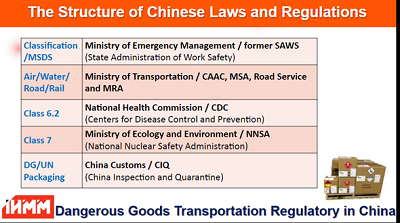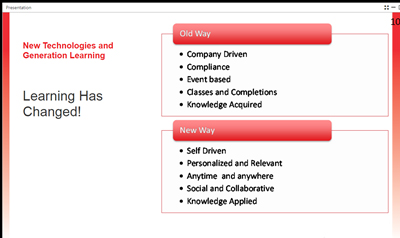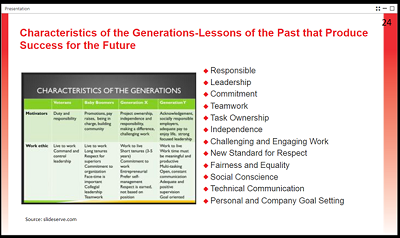
Two recent sessions at the all-virtual 2020 Dangerous Goods Symposium explored two of the more complex issues faced by global hazmat transport operations: Chinese regulations and effective training.
Not only are Chinese Dangerous Goods regulations often more restrictive than those in Europe or the U.S.—their regulatory structure can be baffling, too. Yet the continued growth of e-commerce means international shippers have no choice but to navigate those confusing waters.
This year’s pandemic has forced most hazmat organizations to change how they deliver their training, but how can the training itself be more effective for a more diverse labor force? Leading companies are exploring new techniques and new technologies to make training a more potent tool.
Here’s a recap of these essential sessions.
The intricate details of shipping hazmat into, out of or within China
“People had a lot of questions about the presentation I gave at last year’s Symposium,” said Terry Guo, Dangerous Goods Regulatory Specialist and China Representative at the Institute of Hazardous Material Management. “So I’m going to go into more detail this year.”
Anyone who plans to ship hazmat into, out of or within China needs as much of that detail as they can get.
As we documented last year, China does things its own way. The nation’s industrial history, Guo explained, “has been based on what they learned from the Soviet Union in the 1950s. They didn’t begin to adapt to Western practices until about 40 years ago.”
While China has made significant strides to harmonize its Dangerous Goods regulations with the rest of the world, here are a few differences Guo noted during his session:

- Different agencies administer different aspects of hazmat shipping. Classification and packaging are overseen by agencies separate from the Ministry of Transportation, and two hazmat classes are also overseen by different bodies.
- There is a Dangerous Chemicals List, distinct from the transport-oriented Dangerous Goods List, which lists chemicals by their Chinese names without UN numbers or proper shipping names.
- Ports and warehouses have extra requirements since the 2015 Tianjin explosions, reinforced by the Beirut disaster earlier this year. 335 items are prohibited from inland water transport.
- There are significant gaps in rules for highway transport between China and the 2015 ADR. Because Part 6 (packaging) and Part 9 (vehicle requirements) are not overseen by the Chinese Ministry of Transport but are governed by other ministries using more local requirements.
- UN packaging standards only apply for importing shipments. For export or internal transport, China’s own standards apply. Guo said many shippers employ repackaging or multiple layered packaging when they use China as a redistribution center.
As Guo stated last year: “In general, Chinese regulations are more restrictive than international regulations. They believe they need higher standards. They don’t want to lose control of the process.”
To get a more complete picture of these Chinese regulatory intricacies …
Watch the full session.
Hazmat training for four generations at once
Whether they’re conducted in person or online, hazmat training sessions can often include people from four different generations: Boomers, Gen Xers, Millennials and Generation Z. They all have unique ways to process information and wildly divergent learning styles.
How do you effectively train them all?
That’s the question Tuesday’s session—from LaQuita Donald, Director of Safety, Environmental and OSHA Compliance at Genuine Parts Company and Rhonda Jessop, Labelmaster Director, Global Learning—answered. And it’s a question all Dangerous Goods operations must address, because training isn’t just a regulatory requirement but the cornerstone of a successful organization.
“Effective training is a benefit to everyone in the organization,” said Jessop. “It saves you money, reduces regulatory violations and penalties, and reduces the likelihood of catastrophic events.”
That’s why organizations must embrace and combine new ways of training—not just the book-oriented style of older workers, but also the digital, experiential style of the younger workers who’ll someday replace them.

“We don’t want to talk about change—most of us have to be pushed into it,” said Donald. “But COVID has us thinking about change, so use that momentum to bring about the change youngers need, while keeping older workers engaged.”
“You have to blend the old and the new,” Jessop said. “Younger people want to interact with one another, and being able to apply knowledge as they learn it makes it more relevant to them.”
Donald elaborated, “Understand what each generation brings and use it as a plus, not a negative. All the great characteristics such as leadership, independence and social conscience are not all found in one generation.”

Donald called inclusion “fuel for next-level success.” But what does inclusion look like?
“All languages and voices are important,” she said. “Discover the talent within your team—develop subject matter experts that can train and mentor. Someone can be an SME even if they haven’t been with you very long if they’ve gravitated toward the material.
“Peer mentoring is so important. Pair older and younger workers to make sure you’re bridging the gap. That also ensures knowledge is retained in the company when older workers retire.”
Finally: “Don’t be afraid to continue to get feedback. There’s nothing worse than thinking they’ve got it when they really don’t. And if they don’t get it, you can’t expect them to help you stay compliant.”
Watch the complete session here.
Coming up at the DG Symposium
Friday, Oct. 9: CISA 101 & CFATS Update. Essential updates from the Department of Homeland Security regarding the Cybersecurity and Infrastructure Security Agency and the Chemical Facility Anti-Terrorism Standards.
Make sure your shipments are safe and in complete compliance with a full line of solutions from Labelmaster—a full-service provider of goods and services for hazardous materials and Dangerous Goods professionals, shippers, transport operators and EH&S providers.



Dear Madames/Sirs,
I’m member of the project “Increasing Safety in the Transport of Dangerous Goods by Road in China” of the German Society for International Cooperation (GIZ), aiming for domestic sto support the Chinese government in introducing the ADR in China for domestic road transport and China on its way to become an ADR member state as well.
In this context, I have just watched with great interest the Terry Guo’s presentation “The intricate details of shipping hazmat into, out of or within China”. I’d be very pleased if you could send me the presentation of this lecture as a pdf document. I would also be very interested in the presentation of his related lecture in the “2019 Dangerous Goods Symposium”.
Best regards,
Roland Neureiter
Senior Logistics Safety Manager